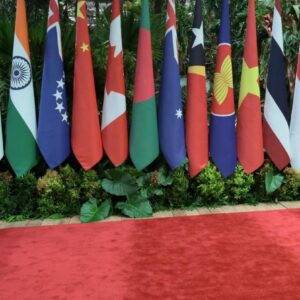The Bay of Bengal Initiative for Multi-Sectoral Technical and Economic Cooperation (BIMSTEC) was initially formed as a sub-regional grouping for economic cooperation with a view to promoting free trade, cross-border investment, tourism and technical cooperation amongst the member countries. Established on 06 June 1997, in Bangkok, Thailand, it was given the acronym BIST-EC, the name being derived from its four founding members (Bangladesh, India, Sri Lanka and Thailand), with the last two letters denoting Economic Cooperation. On 22 December of the same year, Myanmar was added to the grouping which was thereafter renamed BIMST-EC. Two more countries, Nepal and Bhutan became members in February 2004, and in the first summit meeting held on 31 July of that year, the grouping was renamed as BIMSTEC – Bay of Bengal Initiative for Multi-Sectoral Technical and Economic Cooperation.
This year, as BIMSTEC commemorates the silver jubilee of its founding, is an opportune time to analyse what the organisation has achieved so far and more importantly, the road ahead which it needs to charter. In this issue, Mr Shamsher M Chowdhury, BB, the former foreign secretary of Bangladesh gives an account of how the organisation evolved and about its future prospects. He writes of the formal adoption of the BIMSTEC Charter on 30 March 2022, during the Fifth Summit held virtually in Colombo, and posits that the shared commitment of member countries to make BIMSTEC “a dynamic, effective and result-oriented regional organisation for promoting a peaceful, prosperous and sustainable Bay of Bengal region” is a goal that can be achieved through greater cooperation and deeper integration.
Shri Rajiv Bhatia, in his article on Incorporating the Blue Economy into BIMSTEC Agenda, expands on the term ‘Blue Economy,’ which represents the totality of water-related activities and resources—lakes, rivers, bays, coastal regions, seas and oceans—which need sustainable development to meet the growing needs of an expanding world population. He comes out with viable policy suggestions for promoting the Blue Economy and for Trade and Investment, with a view to transforming BIMSTEC into an effective instrument of regional integration.
Madhumita Kothari, in her very focussed and analytical article, discusses the leadership role that India can play in making BIMSTEC a bridge for Regional Connectivity, Prosperity & Security, highlighting in the process, the importance of the Bay. In yet another very focussed article, Shri Anil Trigunayat gives his views on how ‘Brand BIMSTEC’ can be built and concludes with a series of recommendations which could be relevant to achieve that aim. The issue of Climate Change is discussed by Shri Damodar Pujari, with a focus on the role that BIMSTEC can play as a group in tackling this challenge. In yet another innovative article, Shri Ankit Shah spreads the ambit further, delving into how BIMSTEC can integrate with ASEAN and the wider Indo-Pacific region. Finally, in the concluding article focussed on BIMSTEC, Commodore Anil Jai Singh posits on building a resilient Maritime Security Architecture.
A promising future beckons the countries around the Bay of Bengal. It is up to the leadership of all the countries and seize the moment, in the interest of their people and of the region as a whole.
Author Breif Bio: Maj Gen Dhruv C. Katoch is Director, India Foundation and Editor, India Foundation Journal.




